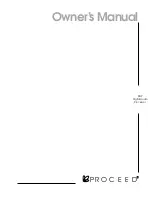
Glossary
A-8
storage class:
Any entry in the symbol table that indicates how to access
a symbol.
structure:
A collection of one or more variables grouped together under a
single name.
symbol:
A string of alphanumeric characters that represents an address or
a value.
symbol table:
A portion of a COFF object file that contains information
about the symbols that are defined and used by the file.
symbolic debugging:
The ability of a software tool to retain symbolic infor-
mation so that it can be used by a debugging tool such as a simulator or
an emulator.
T
target system:
The system on which the object code you have developed
is executed.
target memory:
Physical memory in a TMS320C2x-, TMS320C2xx-, or
TMS320C5x-based system into which executable object code is loaded.
.text section:
One of the default COFF sections. The .text section that is ini-
tialized contains executable code. You can use the .text directive to as-
semble code into the .text section.
trigraph sequence:
A 3-character sequence that has a meaning (as de-
fined by the ISO 646
−
1983 Invariant Code Set). These characters can-
not be represented in the C character set and are expanded to one char-
acter. For example, the tragraph ??’ is expanded to ^.
U
uninitialized section:
A COFF section that reserves space in the memory
map but that has no actual contents. These sections are built up with the
.bss and .usect directives.
unsigned value:
A value that is treated as a nonnegative number, regard-
less of its actual sign.
V
variable:
A symbol representing a quantity that can assume any of a set of
values.
Summary of Contents for TMS320C2x
Page 8: ...viii...
Page 69: ...2 47 C Compiler Description...
Page 159: ...6 36...
Page 226: ...8 6...
















































